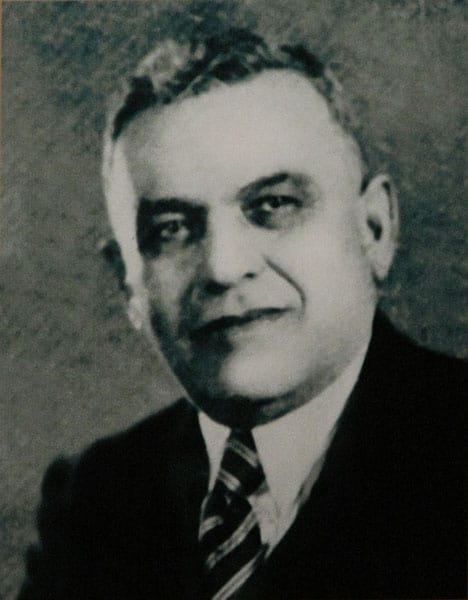Artashes Babalian is not a household name, but was among the protagonists of the history of the first independent Republic of Armenia as Parliament and cabinet member.
He was born on November 17, 1886, in Shushi (Gharabagh). He studied at the local Russian school and from early age was a member of the student groups of the Armenian Revolutionary Federation (ARF). He participated in the self-defense of Gharabagh during the Armeno-Tatar conflict of 1905-1907. In 1907 he went to Switzerland and studied medicine at the University of Geneva, graduating in 1912. While in Geneva, he continued his party activities as member of the editorial board of the monthly Usanogh and contributor to the ARF organ Droshak. He returned to Shushi in 1912 and then moved to St. Petersburg, where he worked at the Obukhov hospital while he prepared to pass his exams and get his medical license. In 1913 he participated in the seventh World Assembly of the ARF as representative of the students from Russia.
After he passed his exams, in 1914 he moved to Kharkov, where he was working when World War I started. In 1915, he abandoned the city to enroll in the volunteer battalion of Khanasori Vartan (Vartan Mehrabian), which fought in the Caucasus front, as its doctor. The battalion participated in the liberation of Van in May 1915. Babalian organized hospitals in the city and became head of the department of health of the provisional government of Van and member of the city council. When the sudden Russian retreat happened, he managed to move the wounded and ill Armenian soldiers under treatment to Igdir. He was decorated with the medal of St. George by the Russian government for his successful organization of this evacuation. After working in Echmiadzin on the care of Armenian refugees, in 1916 he was sent again to Van after the Russian army had reoccupied the city to organize the care of the refugees who had returned there.
Babalian departed to Tiflis in late 1917, when the Russian army started leaving the Caucasus front after the October Revolution. He was elected member of the Armenian National Council and the All-Russian Cities Union. After the proclamation of the Republic of Armenia, in the summer of 1918 he was elected member of the Parliament. In late 1918, he went to Constantinople to join the delegation headed by Avetis Aharonian who was negotiating with the Ottoman government.
After participating in the ninth World Assembly of the party in September-October 1919, Babalian was appointed to ministerial positions: in October 1919-May 1920, he was Minister of Public Healthcare and Labor, and in May-October 1920, he served as deputy prime minister. The critical last months of the first independence found him first in Gharakilise (now Vanadzor), helping put down the May 1920 Bolshevik uprising. In September, after the beginning of the Armeno-Turkish war, he was sent to the front of Kars and Sarikamish with Simon Vratzian as government commissioner. He fell prisoner to the Turkish army on October 30, 1920, when the impregnable fortress of Kars was occupied almost without resistance.
Babalian remained as prisoner in Kars and then in Erzerum (Karin) in 1920-1921. After a year in prison, he was released in October 1921 and settled in Tabriz (Iran). His wife and children joined him later. After moving to Zanjan in 1924, he moved to the capital Tehran in 1928, where he worked until 1938 as head of department at the Pahlavi military hospital.
He lost his sons in 1931 and 1939, and he devoted himself totally to public and party activities to find relief to his grief. When the Soviet forces entered Iran in September 1943, he was arrested and imprisoned until June 1945. After his release, he was elected to several positions, such as church board chairman, member of the Representative Assembly of the Diocese of Tehran, and vice-president and then president of the Diocesan Council, among other positions.
In 1959, he published his memoirs in Cairo and passed away on August 1, at the age of seventy-three, in Tehran.
